Hello,
Download Windows 8.1. If you need to install or reinstall Windows 8.1, you can use the tools on this page to create your own installation media using either a USB flash drive or a DVD. Before you begin. Make sure you have: An internet connection (internet service provider fees may apply). Sufficient data storage available on a computer, USB. If the host machine is 64-bit and you are using VirtualBox to host and running your virtual machine, don’t be puzzled if your VirtualBox is showing you that it can only support for 32-bit of operating system. This isn’t “normal” and you can fix it to enable VirtualBox to support 64-bit OS. I installed Windows 8 Enterprise (32-Bit, final) in Virtualbox 4.1.20 with Windows XP as the host. VBox “knew” Windows 8 and switched 3D-acceleration ON by default. I left it that way, but gave it 1280 MB of RAM and 256 MB of video-RAM. All installed fine, but when I installed the guest additions, Windows 8 “went black and never came back”.
- For the guest, I used the Windows 8.1 (32 bit) VirtualBox setting with 25 GB fixed-size VDI, 2048 MB memory, 2 cores, Enable PAE/NX, and Enable Nested Paging.
- Feb 24, 2020 To get a list of commercially supported guest operating systems of VirtualBox, please follow this link. Windows 10 build 10586 (32/64-bit) Works, with Additions. Requires AMD-V or VT-x.
I am trying to install a Windows 8.1 32 bit guest on a HP ProBook 4520s notebook from a 32 bit linux host, but I get stuck with a 0x0000005D error. My only virtualization experience so far has been with Windows XP on the same PC and VirtualBox install (which works perfectly), and I have tried every solution I found on Internet for this error:
- Check ISO file integrity (sha1sum).
- Windows 8.1 Upgrade Assistant finds no problems.
- Assign two processors and Enable PAE/NX in Settings.
- Implement <ExtraData> fix in .vbox file.
- Flash BIOS to the newest version (F.21, 2012-06-14).
- Try to activate PAE/NX in BIOS (see below).
- Activate Data Execution Prevention and Virtualization Technology in BIOS.
- Disable USB legacy support in BIOS.
- Tested with UEFI Boot ON in BIOS.
- Tested with Windows 8.1 (64 bit) template.
Microsoft Windows 8 32-bit
Does anyone know what else I should try? Where to concentrate my efforts? Where else I should look for answers?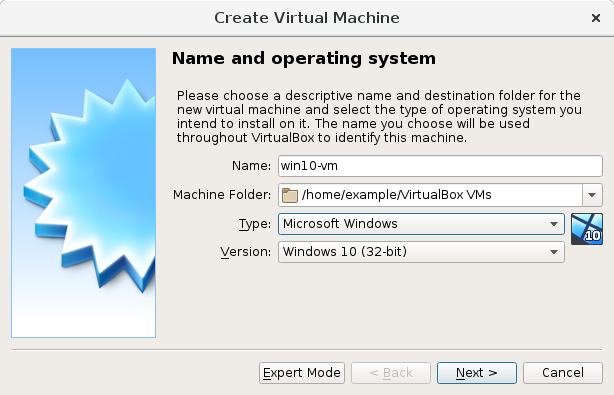 DETAILS:
DETAILS:When I try to install Windows 8.1 in the newly created VM, a blue logo appears for a few seconds, then the following error message is displayed:
- Code: Select allExpand viewCollapse view
Your PC needs to restart.
Please hold down the power button.
Error Code: 0x0000005D
Parameters:
0x03062505
0x756E6547
0x49656E69
0x6C65746E
The hardware is a HP ProBook 4520s with an Intel Core i3-370M @ 2.40GHz (2 cores + HT). The pae, nx, sse2, and vmx flags do appear in /proc/cpuinfo (all listed options: fpu vme de pse tsc msr pae mce cx8 apic sep mtrr pge mca cmov pat pse36 clflush dts acpi mmx fxsr sse sse2 ss ht tm pbe nx rdtscp lm constant_tsc arch_perfmon pebs bts xtopology nonstop_tsc aperfmperf pni dtes64 monitor ds_cpl vmx est tm2 ssse3 cx16 xtpr pdcm pcid sse4_1 sse4_2 popcnt lahf_lm arat dtherm tpr_shadow vnmi flexpriority ept vpid).
The host is Arch Linux (vanilla 3.14.1-1 i686 kernel) with VirtualBox 4.3.10-1.
For the guest, I used the Windows 8.1 (32 bit) VirtualBox setting with 25 GB fixed-size VDI, 2048 MB memory, 2 cores, Enable PAE/NX, and Enable Nested Paging.
I also tested with the Windows 8.1 (64 bit) VirtualBox template, in which case I get a 0x0000000A error instead.
I ran the Windows 8.1 Upgrade Assistant from a Windows 7 partition, and it only issued a few software warnings, nothing hardware-related.
I implemented this special setting in the <ExtraData> section of the .vbox file, even if I believe this may be obsolete now:
Virtualbox 6.0.4 Download For Windows 10
- Code: Select allExpand viewCollapse view
$ VBoxManage setextradata win81 VBoxInternal/CPUM/CMPXCHG16B 1
I updated the BIOS to the newest version available on the HP site (68AZZ BIOS, version F.21, 2012-06-14), but I am not sure if this really helps in any way, as there is no apparent 'NX/No-eXecute' or 'PAE' setting. But if I understand the PAE/NX /SSE2 Support Requirement Guide for Windows 8 correctly, then the Data Execution Prevention switch, which I turned on in the BIOS, includes these settings.
I have tested different BIOS setting combinations, to no avail. This is a reproduction of the core BIOS settings:
Virtualbox 32 Bit Win 10
- Code: Select allExpand viewCollapse view
Boot Options:
* Startup Menu Delay (Sec.) [0]
* Multiboot Express Popup Delay (Sec) [0]
* Custom Logo [OFF]
* Display Diagnostic URL [ON]
* Require acknowledgment of battery errors [OFF]
* CD-ROM boot [ON]
* SD card boot [ON]
* Floppy boot [ON]
* PXE Internal NIC boot [ON]
* UEFI Boot Mode [OFF]
* USB device boot [ON]
Device Configurations:
* USB legacy support [OFF]
* Fan Always on while on AC Power [ON]
* Data Execution Prevention [ON]
* LAN Power Save [ON]
* SATA Device Mode [AHCI]
* HP DatSyarter [ON]
* HP QuickLook [OFF]
* Preboot Authentication on HP QuickLook Boot [OFF]
* HP QuickWeb [ON]
* HP QuickWeb write protect [OFF]
* Virtualization Technology [ON]
* Multi Core CPU [ON]
* Intel (R) HT Technology [ON]
* Wake on USB [OFF]
* NumLock on at boot [ON]
Built-in Device Options:
* Wireless Button State [ON]
* Embedded WLAN Device [ON]
* Network Interface Controller (LAN) [ON]
* Lan/WLAN Switching [OFF]
* Wake on LAN [Boot to Network]
* Optical Disk Drive [ON]
* Integrated Camera [ON]
* Power Monitor Circuit [ON]
* Audio Device [ON]
* Microphone [ON]
* Internal speaker [ON]
Port Options:
* Flash media reader [ON]
* USB Port [ON]
* Express Card slot [ON]
* eData [ON]
I tried to attach the VBox.log, but even after a fresh install and one single run, the forum software complains that this file is too long, so I can just post a (random) snippet here. Please tell me if (and what) other debug information is needed.
- Code: Select allExpand viewCollapse view
00:00:03.291245 VM: fHMEnabled=true (configured) fRecompileUser=false fRecompileSupervisor=false
00:00:03.291247 VM: fRawRing1Enabled=false CSAM=true PATM=true
00:00:03.291378 HMR3Init: VT-x w/ nested paging
00:00:03.291403 MM: cbHyperHeap=0x140000 (1310720)
00:00:03.293330 CPUM: Matched host CPU INTEL 0x6/0x25/0x5 Intel_Core7_Westmere with CPU DB entry 'Intel Core i7-3960X' (INTEL 0x6/0x2d/0x6 Intel_Core7_SandyBridge).
00:00:03.293415 CPUM: SetGuestCpuIdFeature: Enabled PAE
00:00:03.293566 Host paging mode: 32-bit+PGE
00:00:03.293574 PGMPool: cMaxPages=1072 (u64MaxPages=1058)
00:00:03.293578 pgmR3PoolInit: cMaxPages=0x430 cMaxUsers=0x860 cMaxPhysExts=0x860 fCacheEnable=true
00:00:03.307929 REM: VBoxREM64
00:00:03.315185 Using 64-bit aware REM
00:00:03.339545 TM: GIP - u32Mode=1 (SyncTSC) u32UpdateHz=75
00:00:03.371632 TM: cTSCTicksPerSecond=0x8eaae040 (2 393 563 200) fTSCVirtualized=true fTSCUseRealTSC=false
00:00:03.371647 TM: fMaybeUseOffsettedHostTSC=false TSCTiedToExecution=false TSCNotTiedToHalt=false
00:00:03.372061 CoreCode: R3=a9105000 R0=fc577000 RC=a09ab000 Phys=000000002fbfc000 cb=0x2000
00:00:03.372227 AIOMgr: Default manager type is 'Async'
00:00:03.372234 AIOMgr: Default file backend is 'NonBuffered'
00:00:03.372454 BlkCache: Cache successfully initialised. Cache size is 5242880 bytes
00:00:03.372477 BlkCache: Cache commit interval is 10000 ms
00:00:03.372487 BlkCache: Cache commit threshold is 2621440 bytes
00:00:03.472284 [SMP] BIOS with 2 CPUs
00:00:03.508514 SUP: Loaded VBoxDDR0.r0 (/usr/lib/virtualbox/VBoxDDR0.r0) at 0xfc5bb020 - ModuleInit at 0000000000000000 and ModuleTerm at 0000000000000000
00:00:03.510231 SUP: Loaded VBoxDD2R0.r0 (/usr/lib/virtualbox/VBoxDD2R0.r0) at 0xfc600020 - ModuleInit at 0000000000000000 and ModuleTerm at 0000000000000000
00:00:03.510259 Activating Local APIC
00:00:03.510264 CPUM: SetGuestCpuIdFeature: Enabled APIC
00:00:03.510617 PIT: mode=3 count=0x10000 (65536) - 18.20 Hz (ch=0)
00:00:03.520361 Shared Folders service loaded.
00:00:03.572229 Chipset cannot do MSI: VERR_NOT_IMPLEMENTED
00:00:03.572521 DrvBlock: Flushes will be ignored
00:00:03.572529 DrvBlock: Async flushes will be passed to the disk
00:00:03.572828 VDInit finished
00:00:03.572995 AIOMgr: Endpoint for file '/home/jerzy/.VirtualBox/vms/win81/win81.vdi' (flags 000c0723) created successfully
00:00:03.594060 VD: Opening the disk took 21493846 ns
00:00:03.594135 AHCI: LUN#0: disk, PCHS=16383/16/63, total number of sectors 52428800
00:00:03.594157 AHCI: LUN#0: using async I/O
00:00:03.594333 AHCI#0: Reset the HBA
00:00:03.594665 DrvBlock: Flushes will be ignored
00:00:03.594688 DrvBlock: Async flushes will be passed to the disk
00:00:03.594779 VD: Opening the disk took 52255 ns
00:00:03.594886 PIIX3 ATA: LUN#0: CD/DVD, total number of sectors 1423404, passthrough disabled
00:00:03.594906 PIIX3 ATA: LUN#1: no unit
00:00:03.594979 DrvBlock: Flushes will be ignored
00:00:03.594995 DrvBlock: Async flushes will be passed to the disk
00:00:03.595086 PIIX3 ATA: LUN#2: CD/DVD, total number of sectors 0, passthrough disabled
00:00:03.595106 PIIX3 ATA: LUN#3: no unit
00:00:03.595151 PIIX3 ATA: Ctl#0: finished processing RESET
00:00:03.595202 PIIX3 ATA: Ctl#1: finished processing RESET
00:00:03.664821 NAT: DNS#0: 192.168.1.1
00:00:03.665733 Chipset cannot do MSI: VERR_NOT_IMPLEMENTED
00:00:03.665753 Audio: Trying driver 'alsa'.
00:00:03.796479 ALSA: ADC frequency 44100Hz, period size 940, buffer size 3763
00:00:03.796650 HdaCodec: can't open in fmt(freq: 44100)
00:00:03.799543 ALSA: DAC frequency 44100Hz, period size 940, buffer size 3763
00:00:03.799627 HdaCodec: can't open out fmt(freq: 44100)
00:00:03.800324 VUSB: attached 'HidMouse' to port 1
00:00:03.823277 AIOMgr: Flush failed with VERR_INVALID_PARAMETER, disabling async flushes
00:00:03.823404 DevPcBios: SATA LUN#0 LCHS=1024/255/63
00:00:03.823735 PGM: The CPU physical address width is 36 bits
00:00:03.823752 PGMR3InitFinalize: 4 MB PSE mask 0000000fffffffff
00:00:03.832017 VMM: Thread-context hooks enabled!
00:00:03.832099 HM: Using VT-x implementation 2.0!
00:00:03.832100 HM: Host CR4 = 0x7d0
00:00:03.832104 HM: Host EFER = 0x0
00:00:03.832105 HM: MSR_IA32_FEATURE_CONTROL = 0x5
00:00:03.832106 HM: MSR_IA32_VMX_BASIC_INFO = 0xda04000000000f
00:00:03.832108 HM: VMCS id = 0xf
00:00:03.832109 HM: VMCS size = 1024 bytes
00:00:03.832111 HM: VMCS physical address limit = None
00:00:03.832112 HM: VMCS memory type = 0x6
00:00:03.832112 HM: Dual-monitor treatment support = true
00:00:03.832114 HM: OUTS & INS instruction-info = true
00:00:03.832115 HM: Max resume loops = 8192
00:00:03.832116 HM: MSR_IA32_VMX_PINBASED_CTLS = 0x7f00000016
00:00:03.832118 HM: VMX_VMCS_CTRL_PIN_EXEC_EXT_INT_EXIT
00:00:03.832119 HM: VMX_VMCS_CTRL_PIN_EXEC_NMI_EXIT
00:00:03.832120 HM: VMX_VMCS_CTRL_PIN_EXEC_VIRTUAL_NMI
00:00:03.832121 HM: VMX_VMCS_CTRL_PIN_EXEC_PREEMPT_TIMER
00:00:03.832121 HM: MSR_IA32_VMX_PROCBASED_CTLS = 0xfff9fffe0401e172
00:00:03.832124 HM: VMX_VMCS_CTRL_PROC_EXEC_INT_WINDOW_EXIT
00:00:03.832124 HM: VMX_VMCS_CTRL_PROC_EXEC_USE_TSC_OFFSETTING
00:00:03.832125 HM: VMX_VMCS_CTRL_PROC_EXEC_HLT_EXIT
00:00:03.832126 HM: VMX_VMCS_CTRL_PROC_EXEC_INVLPG_EXIT
00:00:03.832127 HM: VMX_VMCS_CTRL_PROC_EXEC_MWAIT_EXIT
00:00:03.832128 HM: VMX_VMCS_CTRL_PROC_EXEC_RDPMC_EXIT
00:00:03.832128 HM: VMX_VMCS_CTRL_PROC_EXEC_RDTSC_EXIT
00:00:03.832133 HM: VMX_VMCS_CTRL_PROC_EXEC_CR3_LOAD_EXIT
00:00:03.832134 HM: VMX_VMCS_CTRL_PROC_EXEC_CR3_LOAD_EXIT (must be set)
00:00:03.832135 HM: VMX_VMCS_CTRL_PROC_EXEC_CR3_STORE_EXIT
00:00:03.832136 HM: VMX_VMCS_CTRL_PROC_EXEC_CR3_STORE_EXIT (must be set)
00:00:03.832136 HM: VMX_VMCS_CTRL_PROC_EXEC_CR8_LOAD_EXIT
00:00:03.832137 HM: VMX_VMCS_CTRL_PROC_EXEC_CR8_STORE_EXIT
00:00:03.832138 HM: VMX_VMCS_CTRL_PROC_EXEC_USE_TPR_SHADOW
00:00:03.832139 HM: VMX_VMCS_CTRL_PROC_EXEC_NMI_WINDOW_EXIT
00:00:03.832140 HM: VMX_VMCS_CTRL_PROC_EXEC_MOV_DR_EXIT
00:00:03.832140 HM: VMX_VMCS_CTRL_PROC_EXEC_UNCOND_IO_EXIT
00:00:03.832141 HM: VMX_VMCS_CTRL_PROC_EXEC_USE_IO_BITMAPS
00:00:03.832142 HM: VMX_VMCS_CTRL_PROC_EXEC_MONITOR_TRAP_FLAG
00:00:03.832142 HM: VMX_VMCS_CTRL_PROC_EXEC_USE_MSR_BITMAPS
00:00:03.832143 HM: VMX_VMCS_CTRL_PROC_EXEC_MONITOR_EXIT
00:00:03.832144 HM: VMX_VMCS_CTRL_PROC_EXEC_PAUSE_EXIT
00:00:03.832145 HM: VMX_VMCS_CTRL_PROC_EXEC_USE_SECONDARY_EXEC_CTRL
00:00:03.832146 HM: MSR_IA32_VMX_PROCBASED_CTLS2 = 0xff00000000
00:00:03.832147 HM: VMX_VMCS_CTRL_PROC_EXEC2_VIRT_APIC
00:00:03.832148 HM: VMX_VMCS_CTRL_PROC_EXEC2_EPT
00:00:03.832149 HM: VMX_VMCS_CTRL_PROC_EXEC2_DESCRIPTOR_TABLE_EXIT
00:00:03.832149 HM: VMX_VMCS_CTRL_PROC_EXEC2_RDTSCP
00:00:03.832150 HM: VMX_VMCS_CTRL_PROC_EXEC2_VIRT_X2APIC
00:00:03.832151 HM: VMX_VMCS_CTRL_PROC_EXEC2_VPID
00:00:03.832151 HM: VMX_VMCS_CTRL_PROC_EXEC2_WBINVD_EXIT
00:00:03.832152 HM: VMX_VMCS_CTRL_PROC_EXEC2_UNRESTRICTED_GUEST
00:00:03.832153 HM: VMX_VMCS_CTRL_PROC_EXEC2_PAUSE_LOOP_EXIT (must be cleared)
00:00:03.832155 HM: VMX_VMCS_CTRL_PROC_EXEC2_RDRAND_EXIT (must be cleared)
00:00:03.832156 HM: VMX_VMCS_CTRL_PROC_EXEC2_INVPCID (must be cleared)
00:00:03.832157 HM: VMX_VMCS_CTRL_PROC_EXEC2_VMFUNC (must be cleared)
00:00:03.832158 HM: MSR_IA32_VMX_ENTRY_CTLS = 0xffff000011ff
00:00:03.832160 HM: VMX_VMCS_CTRL_ENTRY_LOAD_DEBUG
00:00:03.832161 HM: VMX_VMCS_CTRL_ENTRY_LOAD_DEBUG (must be set)
00:00:03.832162 HM: VMX_VMCS_CTRL_ENTRY_IA32E_MODE_GUEST
00:00:03.832163 HM: VMX_VMCS_CTRL_ENTRY_ENTRY_SMM
00:00:03.832163 HM: VMX_VMCS_CTRL_ENTRY_DEACTIVATE_DUALMON
00:00:03.832164 HM: VMX_VMCS_CTRL_ENTRY_LOAD_GUEST_PERF_MSR
00:00:03.832165 HM: VMX_VMCS_CTRL_ENTRY_LOAD_GUEST_PAT_MSR
00:00:03.832165 HM: VMX_VMCS_CTRL_ENTRY_LOAD_GUEST_EFER_MSR
00:00:03.832166 HM: MSR_IA32_VMX_EXIT_CTLS = 0x7fffff00036dff
00:00:03.832168 HM: VMX_VMCS_CTRL_EXIT_SAVE_DEBUG
00:00:03.832169 HM: VMX_VMCS_CTRL_EXIT_SAVE_DEBUG (must be set)
00:00:03.832170 HM: VMX_VMCS_CTRL_EXIT_HOST_ADDR_SPACE_SIZE
00:00:03.832170 HM: VMX_VMCS_CTRL_EXIT_LOAD_PERF_MSR
00:00:03.832171 HM: VMX_VMCS_CTRL_EXIT_ACK_EXT_INT
00:00:03.832172 HM: VMX_VMCS_CTRL_EXIT_SAVE_GUEST_PAT_MSR
00:00:03.832172 HM: VMX_VMCS_CTRL_EXIT_LOAD_HOST_PAT_MSR
00:00:03.832173 HM: VMX_VMCS_CTRL_EXIT_SAVE_GUEST_EFER_MSR
00:00:03.832174 HM: VMX_VMCS_CTRL_EXIT_LOAD_HOST_EFER_MSR
00:00:03.832175 HM: VMX_VMCS_CTRL_EXIT_SAVE_VMX_PREEMPT_TIMER
00:00:03.832175 HM: MSR_IA32_VMX_EPT_VPID_CAP = 0xf0106114141
00:00:03.832177 HM: MSR_IA32_VMX_EPT_VPID_CAP_RWX_X_ONLY
00:00:03.832178 HM: MSR_IA32_VMX_EPT_VPID_CAP_GAW_48_BITS
00:00:03.832179 HM: MSR_IA32_VMX_EPT_VPID_CAP_EMT_UC
00:00:03.832180 HM: MSR_IA32_VMX_EPT_VPID_CAP_EMT_WB
00:00:03.832181 HM: MSR_IA32_VMX_EPT_VPID_CAP_SP_21_BITS
00:00:03.832181 HM: MSR_IA32_VMX_EPT_VPID_CAP_INVEPT
00:00:03.832182 HM: MSR_IA32_VMX_EPT_VPID_CAP_INVEPT_SINGLE_CONTEXT
00:00:03.832184 HM: MSR_IA32_VMX_EPT_VPID_CAP_INVEPT_ALL_CONTEXTS
00:00:03.832185 HM: MSR_IA32_VMX_EPT_VPID_CAP_INVVPID
00:00:03.832186 HM: MSR_IA32_VMX_EPT_VPID_CAP_INVVPID_INDIV_ADDR
00:00:03.832187 HM: MSR_IA32_VMX_EPT_VPID_CAP_INVVPID_SINGLE_CONTEXT
00:00:03.832188 HM: MSR_IA32_VMX_EPT_VPID_CAP_INVVPID_ALL_CONTEXTS
00:00:03.832188 HM: MSR_IA32_VMX_EPT_VPID_CAP_INVVPID_SINGLE_CONTEXT_RETAIN_GLOBALS
00:00:03.832189 HM: MSR_IA32_VMX_MISC = 0x401e7
00:00:03.832191 HM: MSR_IA32_VMX_MISC_PREEMPT_TSC_BIT = 0x7 - erratum detected, using 0x0 instead
00:00:03.832192 HM: MSR_IA32_VMX_MISC_STORE_EFERLMA_VMEXIT = true
00:00:03.832193 HM: MSR_IA32_VMX_MISC_ACTIVITY_STATES = 0x7
00:00:03.832194 HM: MSR_IA32_VMX_MISC_CR3_TARGET = 0x4
00:00:03.832195 HM: MSR_IA32_VMX_MISC_MAX_MSR = 512
00:00:03.832196 HM: MSR_IA32_VMX_MISC_RDMSR_SMBASE_MSR_SMM = false
00:00:03.832197 HM: MSR_IA32_VMX_MISC_SMM_MONITOR_CTL_B2 = false
00:00:03.832198 HM: MSR_IA32_VMX_MISC_VMWRITE_VMEXIT_INFO = false
00:00:03.832199 HM: MSR_IA32_VMX_MISC_MSEG_ID = 0x0
00:00:03.832200 HM: MSR_IA32_VMX_CR0_FIXED0 = 0x80000021
00:00:03.832201 HM: MSR_IA32_VMX_CR0_FIXED1 = 0xffffffff
00:00:03.832203 HM: MSR_IA32_VMX_CR4_FIXED0 = 0x2000
00:00:03.832204 HM: MSR_IA32_VMX_CR4_FIXED1 = 0x227ff
00:00:03.832205 HM: MSR_IA32_VMX_VMCS_ENUM = 0x2a
00:00:03.832206 HM: MSR_IA32_VMX_VMCS_ENUM_HIGHEST_INDEX = 0x15
00:00:03.832207 HM: APIC-access page physaddr = 0x000000001b7c4000
00:00:03.832209 HM: VCPU 0: MSR bitmap physaddr = 0x000000001b7c3000
00:00:03.832211 HM: VCPU 0: VMCS physaddr = 0x000000001b7c5000
00:00:03.832213 HM: VCPU 1: MSR bitmap physaddr = 0x000000001a396000
00:00:03.832215 HM: VCPU 1: VMCS physaddr = 0x000000001a394000
00:00:03.832216 HM: Guest support: 32-bit only.
00:00:03.832223 HM: VMX enabled!
00:00:03.832232 CPUM: SetGuestCpuIdFeature: Enabled SYSENTER/EXIT
00:00:03.832234 HM: NX not enabled on the host, unavailable to PAE guest.
00:00:03.832235 HM: Nested paging enabled!
00:00:03.832236 HM: EPT flush type = VMX_FLUSH_EPT_SINGLE_CONTEXT
00:00:03.832237 HM: Unrestricted guest execution enabled!
00:00:03.832237 HM: VPID enabled!
00:00:03.832238 HM: VPID flush type = VMX_FLUSH_VPID_SINGLE_CONTEXT
00:00:03.832242 HM: VMX-preemption timer enabled (cPreemptTimerShift=0).
00:00:03.832244 HM: VT-x/AMD-V init method: GLOBAL
00:00:03.832246 VMM: fUsePeriodicPreemptionTimers=false
00:00:03.832969 Logical host processors: 4 present, 4 max, 4 online, online mask: 000000000000000f
00:00:03.833034 Physical host cores: 2
The following line stands out to me in VBox.log:
- Code: Select allExpand viewCollapse view
00:00:03.832234 HM: NX not enabled on the host, unavailable to PAE guest.
I really don't know what to make of this. /proc/cpuinfo does recognize this option, Windows Upgrade Assistant didn't complain, and Enable PAE/NX is checked in the VirtualBox settings. So what is going on?
This tutorial will show you step by step what to do when VirtualBox is only showing 32-bit and no 64-bit versions of operating systems as options while creating a new virtual machine.
Note: This may be obvious for most of you, but your host operating system should be 64-bit to run 64-bit guest operating systems in VirtualBox.
If VirtualBox has no 64-bit option on Windows 10, then you can try the solutions on this page to fix the problem.
Methods:
My experience with this problem
I experienced the same problem while trying to install a 64-bit version of Linux Mint inside VirtualBox.
I opened VirtualBox, clicked on NEW, entered a name for the virtual machine, choose the type of operating system, but when I wanted to choose a version, I only saw 32-bit versions and NO 64-bit versions as an option.
But:
Fortunately, I found a simple solution online and on this page, I will share that solution with you.
Note! Your host operating system (OS installed on your PC) must be 64-bit.
I was using a 64-bit version of Microsoft Windows 10 Pro while creating this tutorial.
Make sure that “Intel Virtualization Technology” and “VT-d” are enabled
Enter BIOS settings and check if “Intel Virtualization Technology” and “VT-d” are enabled.
The following steps may be slightly different on your computer.
1. Start (or restart) your PC.
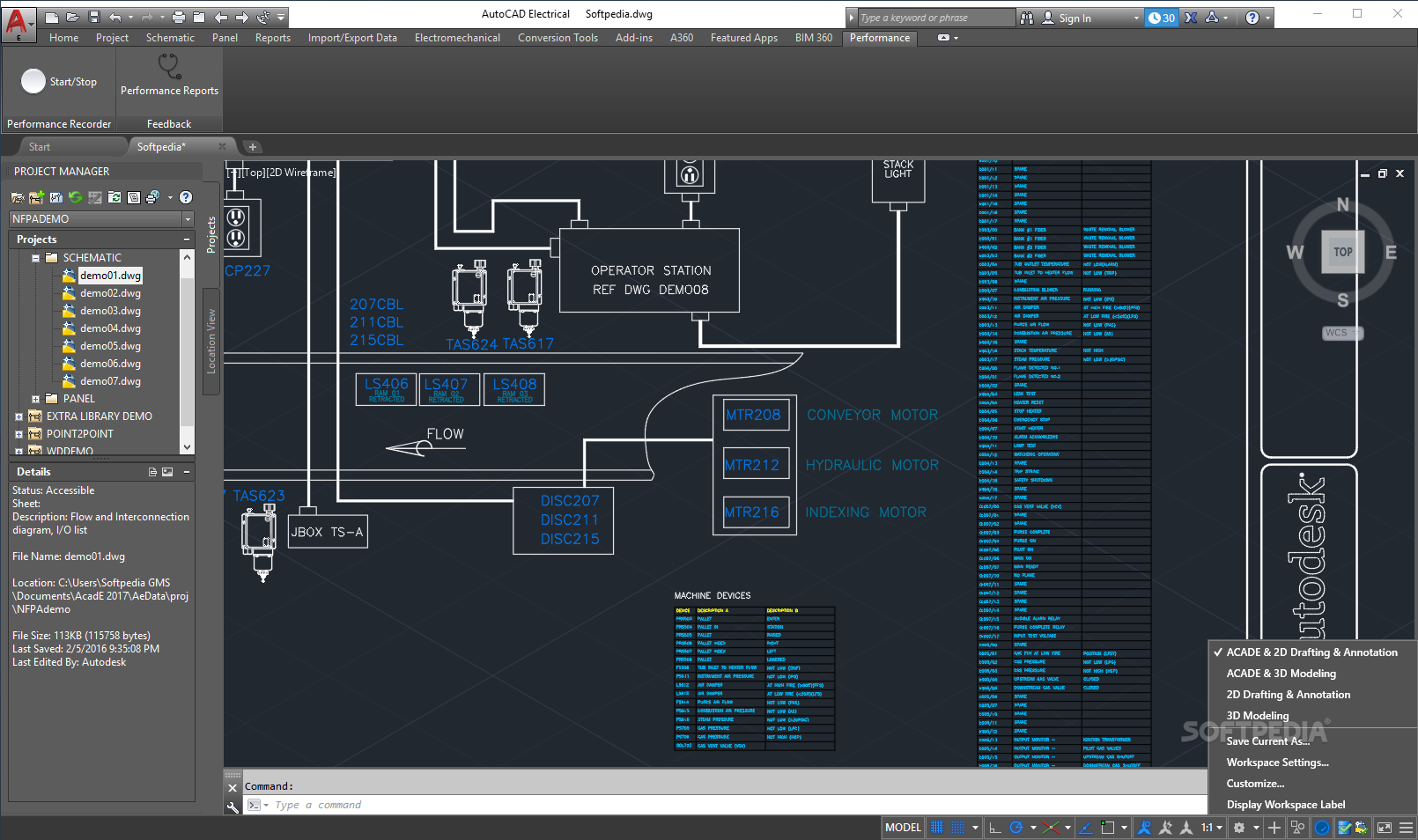
2. Press the right keyboard key to enter the BIOS setup. This must be done before Windows starts, so it's best to press the key a few times directly after you start your PC.
The exact key or key combination depends on your computer manufacturer and model.
Common keys to enter the BIOS are F1, F2, F10, DEL, and ESC.
3. Look for the following settings Intel Virtualization Technology and VT-d.
4. Make sure that they're both enabled.
5. If you made changes, then you must save the settings.
Windows 10 (host) must be a 64-bit operating system
To check if your Windows 10 is a 64-bit operating system, press the [Windows] + [pause] keyboard keys.
At System type (located under System), you should see something like 64-bit Operating System, x64-based processor.
Hyper-V must be disabled
Hyper-V is Microsoft's hardware virtualization product.
It lets you create and run virtual machines (like VirtualBox).
But:
Many third-party virtualization applications (including VirtualBox) do not work together with Hyper-V.
That's why you must make sure that Hyper-V is disabled.
To check if Hyper-V is disabled, follow the following steps:
1. Right-click on the Windows start menu button.
2. Click on Run.
3. Enter optionalfeatures.exe in the Run window.
4. Click on OK or press Enter.
The Windows Features window will appear.
5. Check if the Hyper-V option is unchecked.
6. If the Hyper-V option unchecked (like in the screenshot above), then you can close the Windows Features window.
But:
If the option is checked, then you will need to uncheck it and then click on OK.
If you want to be 100% sure that Hyper-v is disabled then follow these steps:
1. Right-click on the Windows start menu button.
2. Click on Command Prompt (Admin).
3. Enter the following command:
4. Press Enter.
5. After the command is finished, you will need to power down and reboot your PC.
Solution 1: Repair VirtualBox installation
1. Right-click on the installer file (the one you used to install VirtualBox) and choose Run as administrator.
If you don't have the installer file anymore, then you will need to download it from the VirtualBox website (www.virtualbox.org). The installer file must be the same version as the version of VirtualBox that's installed on your computer.
2. When the Windows User Account Control window appears, you click Yes.
Note: You might need to enter an administrator password in the User Account Control window and then click Yes.
A setup window will appear.
3. Click on Next.
4. Click on the Repair icon.
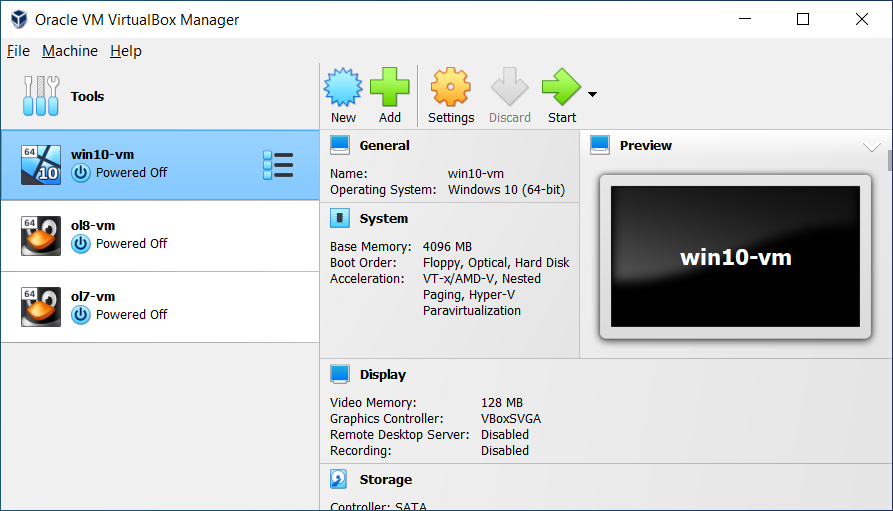
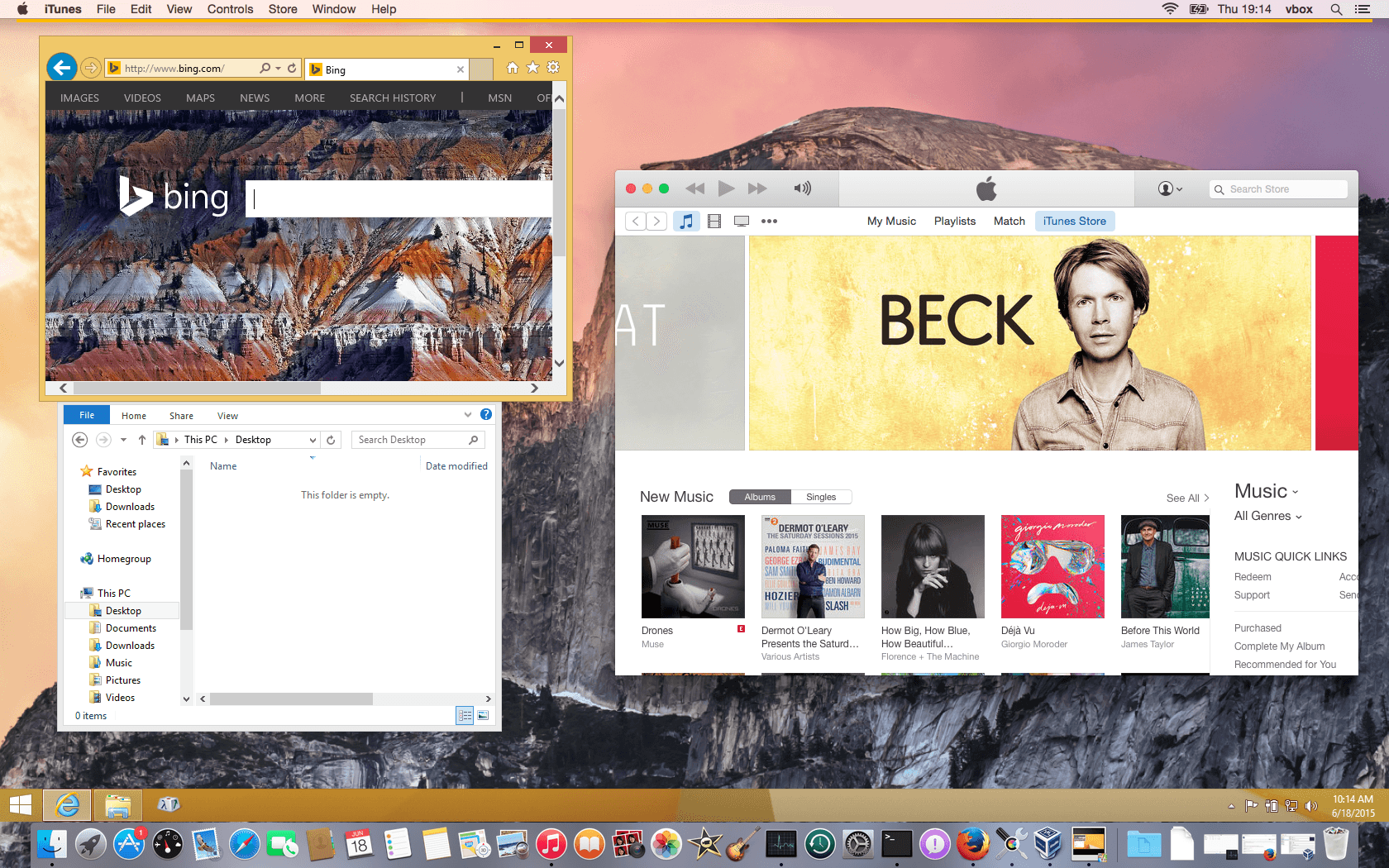
5. Click on Repair located at the bottom right.
VirtualBox will now start the repairing process. This will only take a few seconds.
6. After the repair process is finished, you click on Finish.
VirtualBox may ask you to restart your PC.
Hopefully, this simple solution will solve your problem.
Solution 2: Disable “Memory integrity” in Windows 10
1. Open Windows Security.
2. Click on Device security.
3. Under Core isolation, you click on Core isolation details.
4. Make sure that Memory integrity is turned off.
If Memory integrity was enabled and you just disabled it, then you may need to restart your PC.
Hopefully, this simple solution will solve your problem.
☕ Buy me a coffee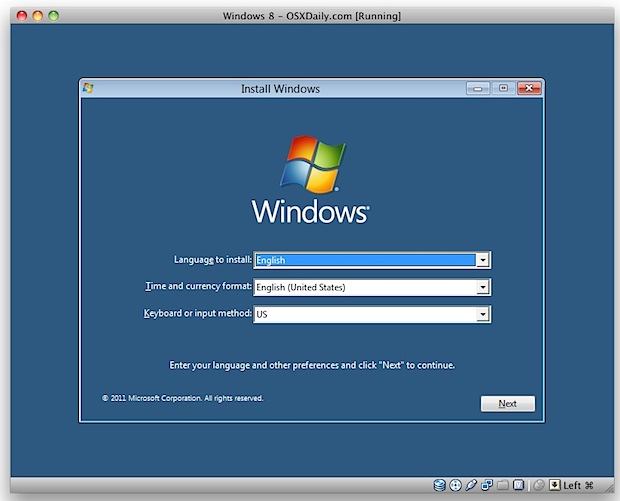
Maybe you're also interested in: